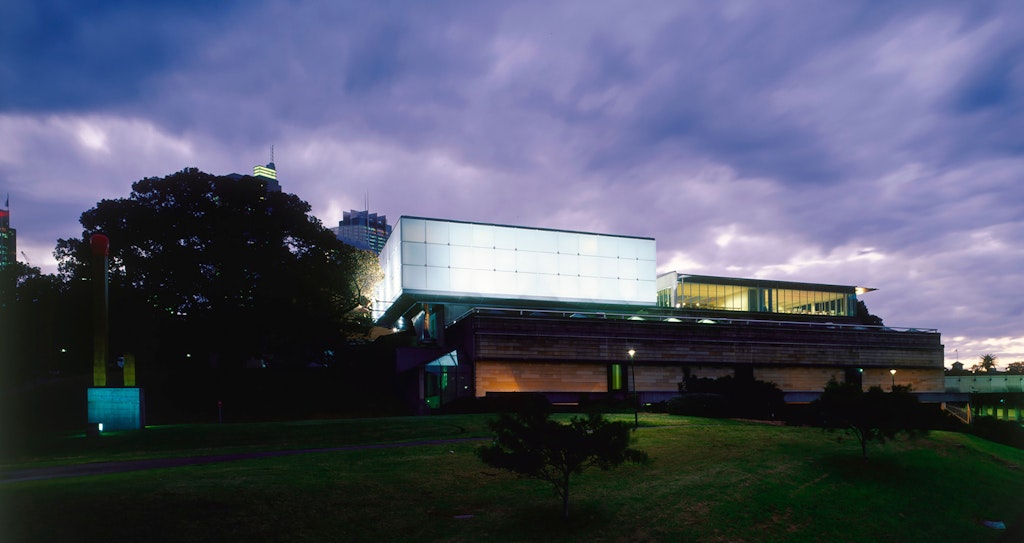An Asian lantern, 2003

A new Asian art gallery, designed by architect Richard Johnson, at the Art Gallery of New South Wales, 2003, photo: Eric Sierens
A new Asian gallery was opened at the Art Gallery of New South Wales in 2003 with the aim of bringing ‘Asian art and culture to the fore of the building and into the consciousness of the people’. Known as the upper Asian gallery, it was built on top of a lower Asian gallery, which had opened on 25 March 1990 as the last phase of the Australian Bicentennial additions. The Art Gallery submitted plans for the upper Asian gallery in 1996, but it was not until 2000 that the state government pledged $13 million towards the project. Concern over the true cost of the Sydney Olympics was said to have delayed funding.
Designed by Sydney architect Richard Johnson, the building was an elegant square within a square, evoking features of Asian culture and architecture, with its references to a lantern and a pavilion on a platform. The walls of the lantern gallery were made entirely of glass, with a three-part composite of clear glass to the outside, a white inter-layer and standard glass facing the interior, pinned together on the exterior by decorative stainless-steel lotuses. The way natural light was brought into this space and directed, depending on differing conservation requirements of the art, was a remarkable feature of the design.
Anne Flanagan, general manager of exhibitions and building, spoke of the Art Gallery now having three distinct zones: European and historic Australian art within the Vernon building, 20th-century Australian and international art in the 1972 and 1988 galleries designed by Andrew Andersons, and now Asian art over two floors within its own wing.